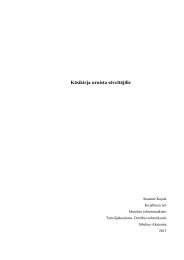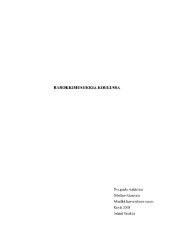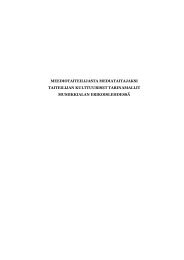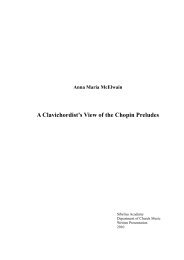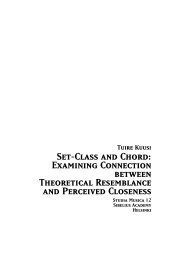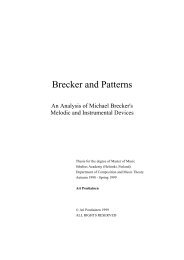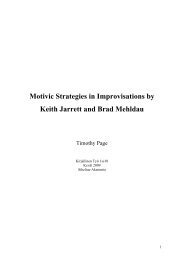The Unfinished Piano Sonatas of Franz Schubert Javier ... - Ethesis
The Unfinished Piano Sonatas of Franz Schubert Javier ... - Ethesis
The Unfinished Piano Sonatas of Franz Schubert Javier ... - Ethesis
You also want an ePaper? Increase the reach of your titles
YUMPU automatically turns print PDFs into web optimized ePapers that Google loves.
standard repertory and they represent an essential component <strong>of</strong> musical studies<br />
around the world. Hence my surprise when, at the beginning <strong>of</strong> this project, I noticed<br />
that the existing literature on these pieces is quite meagre, <strong>of</strong>ten limited to short<br />
chapters in larger studies. After all, they represent nothing less than half <strong>of</strong> all <strong>of</strong><br />
<strong>Schubert</strong>’s sonatas for solo piano. I hope the present text will help, at least partially, to<br />
fill that gap.<br />
Having myself performed every one <strong>of</strong> <strong>Schubert</strong>’s complete piano sonatas, and<br />
having been a devoted interpreter <strong>of</strong> his songs and chamber music, I hope to throw<br />
some light on and share my views about these fascinating pieces. This study is intended<br />
to explore <strong>Schubert</strong>’s incomplete sonatas as they were written, at the same time<br />
considering the context that <strong>Schubert</strong>’s life and his work in other genres provided. <strong>The</strong><br />
present text will not especially focus on the unfinished nature <strong>of</strong> these works, but rather<br />
on the music which they contain. <strong>The</strong> sonatas will be analyzed individually and in<br />
chronological order, mainly from a stylistic and formal point <strong>of</strong> view, but also with an<br />
attempt to show, through these incomplete pieces, the development <strong>of</strong> <strong>Schubert</strong>’s music<br />
as a whole. At the same time, we should remember that these works mostly cover his<br />
youthful – although very prolific – years. In other words, they are a part <strong>of</strong> <strong>Schubert</strong>’s<br />
road to maturity, his years <strong>of</strong> experimentation, hard work and the changing influences<br />
upon him.<br />
If the essence <strong>of</strong> a performer’s task is to recreate a musical artwork, I believe<br />
that one <strong>of</strong> the main goals an interpreter should ultimately strive for is to think in the<br />
same way as the composer and thus, literally, to attempt the music’s re-creation. In<br />
order to achieve that degree <strong>of</strong> understanding, the key question a performer should<br />
always ask himself or herself is why, not how. <strong>The</strong> how can only be a consequence <strong>of</strong><br />
the why. In musical performance, as in any other intellectual discipline, the how,<br />
although important, is always secondary to the why. <strong>The</strong>refore, I believe that the more<br />
you question the music in front <strong>of</strong> you and the more you enrich your understanding<br />
with music from other genres, the closer you will come to the truth and to a real<br />
understanding <strong>of</strong> what you should be doing. In this respect, unfinished works <strong>of</strong>ten help<br />
one to understand the process <strong>of</strong> creation, and therefore the why, even better than the<br />
complete and perfected works. After all, great masterpieces are <strong>of</strong>ten the consequence<br />
<strong>of</strong> work on and experimental experience with lesser-known or less-appreciated works.<br />
In the case <strong>of</strong> <strong>Schubert</strong>’s output, his approximately twenty piano sonatas coexist with<br />
over six hundred songs, about twenty stage works, more than ten symphonies, a great<br />
number <strong>of</strong> chamber pieces and thousands <strong>of</strong> bars <strong>of</strong> liturgical music. <strong>The</strong>refore, it is no<br />
surprise that the key to his music for piano <strong>of</strong>ten lies in his experience as a Lied<br />
composer, his efforts in opera or his work as a symphonic composer. This study aims at<br />
enhancing the awareness <strong>of</strong> the creative process within <strong>Schubert</strong>’s piano sonatas in the<br />
light <strong>of</strong> such co-relationships.<br />
xi




